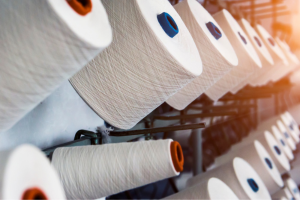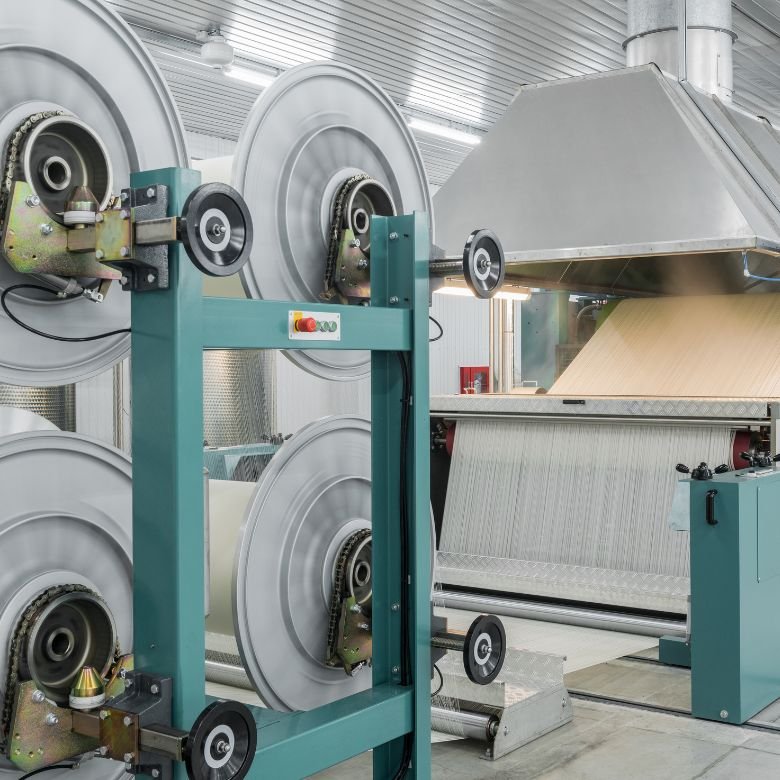The surfactants are chemical compounds that play a very important role in many industries. Thanks to their unique properties and a wide range of applications, they are used, among others, in the textile industry. The textile industry is characterised by considerable diversity due to the large number of small and medium-sized enterprises. Intensified competition affects the dynamics of the development of production technologies, including chemical raw materials and auxiliary substances used. Surfactants are used in the textile industry at almost every stage of the production cycle: the production of raw materials (synthetic fibres), semi-finished products (e.g. materials) and final products (clothing and other finished products). These compounds are also used in individual machining processes, such as cleaning, lubrication, dyeing or finishing.

Structure of surfactants
Surfactants belong to the group of substances active on the surface, and they owe their name to specific features and various functions. A surfactant molecule actively adapts to the polar nature of the surface of the phases into which it is introduced. This phenomenon results from its molecular structure, i.e. two ends connected with a covalent bond:
– a polar hydrophilic part, which is responsible for molecular interactions with water molecules;
– a low polarity hydrophobic part, which is attracted to organic molecules.
Long hydrocarbon and alkyl aromatic chains are examples of non-polar groups.
Surfactants can take an ionic, amphoteric or non-ionic form. Anionic surfactants form a negative charge at the end of their polar part. They are the most common type used in commercial production (e.g. alkyl benzene sulfonates). Similarly, cationic molecules have a positive charge, and amphoteric molecules have a positive and negative charge at the same time. Another very important group are non-ionic agents containing covalently oxy-bonded hydrophilic groups. Surfactants are a very diverse group of products that are used in virtually every branch of industry.
Functionality of surfactants in the textile industry
Surfactants in the textile industry are mainly used as:
– Equalising agents
Often one surfactant has several valuable properties and can be used in a variety of ways depending on the application.
Detergents
Detergents are usually diluted solutions of surfactants for washing, removing dirt and related properties. An effective detergent should have the following characteristics: good wetting properties, soil removal ability, and the ability to dissolve or disperse the removed soil and prevent its repeated deposition on the cleaned surface. They are used in wet textile processing for applications related to:
– washing and cleaning of fibres; the recommended cleaning agents include phosphoric esters, e.g. products from the EXOfos® series;
– removal of oil, as well as sizing from fabrics remaining after the initial treatment process. In this case, products from the ROKAnol® series show high efficiency, e.g. ROKAnol®IT7. In turn, stain-preventing properties can be obtained by using ROKAfenol D8 – an ethoxylated dodecylphenol.
Wetting agents
Unprocessed textile fibres do not absorb water. The use of wetting agents reduces the hydrophobic properties of the material and thus facilitates the penetration of water or chemicals. It also enables wet processing by reducing the surface tension of the fibre. This is especially important when treating some of natural fibres such as cotton, linen or silk, as they lose some of their strength when in contact with water. Improving the wet strength of fibres is integral to the production of garments and technical textiles. Some surfactants, such as ROKAnol LP series provide excellent wetting and are used in the textile industry (e.g. ROKAnol LP2024W/95).

Emulsifiers
The vast majority of surface-active auxiliary agents used in textile processing are available in the form of emulsions. To ensure their proper action, emulsifying agents are used. It is important that textile emulsifiers have the appropriate properties:
– give the drops the expected electric potential;
– adsorb quickly around the dispersed drops in the form of a non-stick film preventing coalescence;
– stable and non-toxic;
– increase the viscosity of the emulsion;
– compatible with other ingredients.
Auxiliary agents modify the final appearance of the fabric, soften it or improve its properties. Textile finishing is used to achieve the desired effects and can have aesthetic or functional values – especially in specialised industries. Examples of additives include: textile softeners, preservatives, synthetic lubricants, screen printing emulsions, matting agents, emulsion oils, lustring agents and starch additives.
A wide range of surfactants with emulsifying properties is offered by the PCC GROUP – a manufacturer and distributor of chemical products and formulations for the industry, including the textile industry.
Equalising agents, conveyors, equalisers
Equalising agents are chemicals used in textile processing to improve the uniformity and consistency of dye or pigment absorption on the fabric. They help to achieve a uniform colour of the material or print, reducing the difference in dye or pigment absorption between different areas of the fabric. In addition, they increase the smoothness of the surface, limit the migration of colour on the fabric and ensure the durability of the colour, making it resistant to fading or washing. Equalising agents are also used in tanning, e.g. in chrome tanning. They often have an additional dispersing effect, maintaining the water solubility of the dispersion dye, breaking up its particles and enabling the use of powder pigments. Offered by the PCC Group, Dyspergator NNOC E will be perfect for dyeing processes. This surfactant has an affinity for organic and inorganic pigments, making it an effective dispersing and equalising agent.
Antistatic agents
Fabrics made of synthetic hydrophobic fibres, such as polyester, polyacrylic or polyamide tend to generate electrostatic charges, which results in material adhesion and causes many problems in the processing of textile materials, e.g. yarn production. Natural fibres may pick up static in low humidity conditions, e.g. during winter. The electric load causes undesirable adhesive force and resulting roughness. Surfactants remove the undesirable effects of this phenomenon by antistatic treatment, the effect of which may be temporary or permanent. EXOstat W is an agent with very good antistatic properties. In addition, it is also an effective softener and is used as a lubricant for raw materials in their natural state as well as those subjected to dyeing or printing processes.
Other applications of the surfactants in the textile production cycle
Textile processing includes many stages. Different requirements arise in the production process. Due to the large-scale use of auxiliary agents, a large amount of foam is generated during the wet dyeing and finishing of textiles, which reduces the production capacity, makes work difficult and has a negative impact on quality. There is a solution to this problem in the form of low-foaming agents that prevent rapid and excessive foam growth. Defoaming properties often occur as one of the many properties of surfactants – next to wetting or emulsifying. An example is a condensed mixture of non-ionic surfactants with a wide spectrum of properties – EXOdet W which can be used as an effective low-foaming agent in the textile industry. In addition, it works well as a detergent. A specialised preparation based on cationic and non-ionic surfactants Roksol AZR is good for similar applications.
The dedicated equipment, which must be neat and clean, is an important part of the proper course of textile processes. In the case of washing industrial machines, the perfect choice will be surfactants that play a key role in dissolving dirt, emulsifying fats and oils and removing them from the surface. The selection of appropriate washing agents affects the quality of future textile processing cycles and the maintenance of production machinery and equipment. It is therefore worth choosing the recommended preparations, such as Rokanole IT, available in the portfolio of the PCC Group, which are intended for professional industrial cleaning.

Groups of chemical compounds and their properties
Different groups of surfactants are used in the textile industry, depending on the desired effect. Ethoxylates are one of the most frequently used groups of compounds. They have a wide spectrum of properties and applications while maintaining high specificity of effects. There are the following groups among ethoxylates:
- Fatty alcohol ethoxylates which are an important factor in the textile industry. Their main function is emulsification. They are also used for cleaning as well as equalising dyes and as wetting agents.
- Fatty acid ethoxylates are used as emulsifiers, water softeners, wetting agents, and yarn colouring agents.
- Fatty amine ethoxylates are a good oil emulsifier and dye dispersant. They act as lubricants for the fibres as well as colouring agents.
The PCC Group is also a manufacturer of other surfactants used in the industry, including: alkyl benzene sulfonates, phosphoric esters, sorbitan esters, sulfosuccinates, quaternary compounds and betaines.
The use of surfactants in the textile industry opens up many opportunities and potential benefits. Their properties allow them to be used in almost all stages of production, for example during:
– pre-treatment, including: burning off, unsticking, mercerisation, bleaching, carbonisation, pre-washing, stabilisation;
– lubrication – important during spinning, lacing and weaving as lubricants and softeners;
– dyeing and printing;
– finishing processes – giving specific features to materials – e.g. softening, antistatic.
The global textile market is driven by technological progress and digital technologies. In addition, it is very closely related to fashion and its trends. Textile designers and manufacturers must respond quickly to changing consumer preferences and lifestyles, leading to constant evolution in production and design. This fact also determines the huge demand for surfactants, the use of which has great potential to improve the efficiency of production processes, product quality and environmental impact. Read more about the full offer of the PCC Group, where high-class surfactants for the textile industry are available.
